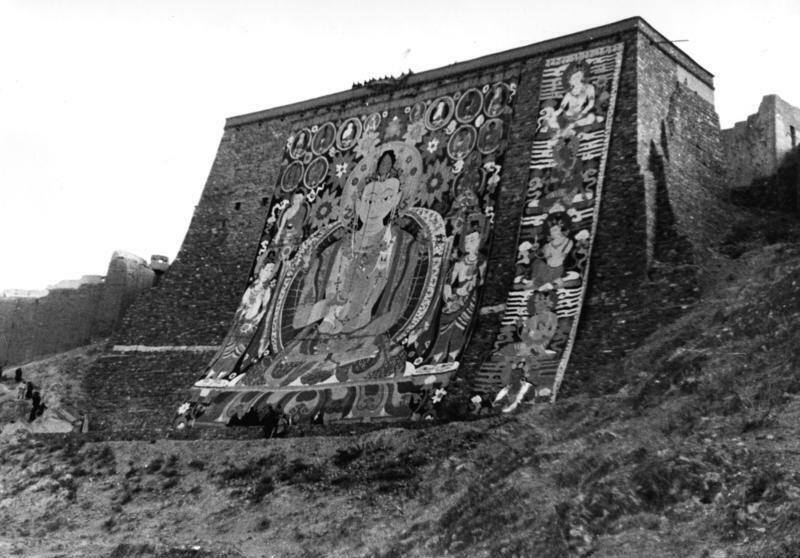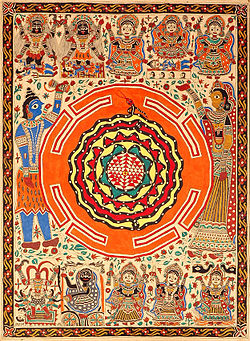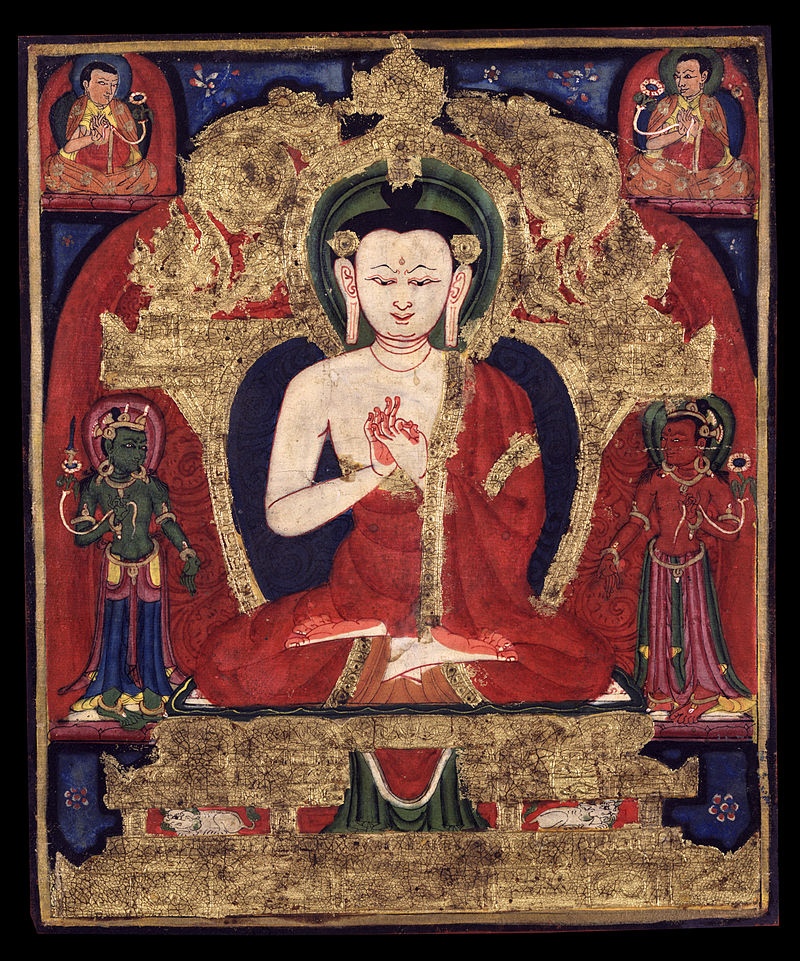Have you ever looked at a centuries old artwork and thought for a while about the story it tells you and the emotions it depicts ?
Art is not just a decorated piece of paper or canvas with brush strokes; a piece of stone, wood or metal carved into some shape. Rather…
Art is an ocean of emotion, meaning and depth. Every artwork has its own story and every brush stroke; color or a carve has its own purpose. Art is not just decoration: it is a form of poetry that beautifully tells a story of its own and reflects an intricate emotion that can be felt through the canvas. Its much deep than we think.
I am writing this in order to make you aware of the fine art that holds Nepal’s philosophy, history, culture, tradition and emotion: the art that tells the story of Nepal. Usually, I see the foreigners a apprenticing Nepali fine-art more than the Nepalese. Most Nepalese are unaware of the art that tells their own story. So, lets dive into the ocean of art in order to change this.
There are mainly two types of fine art on the basis of surface that are: pictorial art and sculpture.
1. PICTORIAL ART
Nepal has many forms of pictorial art. They mostly depict religious and historical topics
i. Paubhā: पौभा (नेवारी चित्रकला )
Paubhā (Paubha) is an art_form from the Licchavi era, which is
also called the golden era of Nepali art. This art is usually practiced by the Newar
Community of the Kathmandu valley (referring to Kathmandu, Bhaktapur and Lalitpur).
This traditional art is made in fabrics and sometimes it is also made in the walls
of Durbars (Palaces), Temples and Stupas. It is also considered a Newari equivalent of Thangka but it will be injustice to call it Newari Thangka.

(Paubha painting showing Vishnu Mandala (15th century).)
(Paubha painting by artist Udaya Charan Shrestha )
(Paubhā painting by artist Samundra Man Singh Shrestha )
This is a religious art-form which depicts the deities and philosophy of Hindu and Buddhist mythology. This art form visually represents religious and philosophical topics also giving some creative liberty to the artists. This is made with natural pigments and intricate details. This art-form was traditionally done by the Chitrakar caste of Newar community.
In the current times it is also done by many people and it shouldn't just be limited to a specific caste or community. All of us can embrace it.
|



Artists like Kesaraja Chitrakar, Jivaram, and Adyaraj and Udayaram Pun had pioneered Newari Paubhā art since15th century Malla renaissance and before. They brought a new height to traditional Nepali Newari art. For more information I would like to suggest Unnamed masters of Nepal’s art identified, History on Canvas
(Manikman Chitrakar _1964-2045)
(Samundra Man Singh Shrestha )
(Lok Chitrakar)
(Udaya Charan Shrestha)
Artists like late Manikman Chitrakar, Samundra Man Singh Shrestha, Udaya Charan Shrestha and many more have beautifully popularized the Paubhā art. They have built a legacy of divine art representing Nepal all around the world. Such artists are the precious legends bringing soul to Nepal's traditional art.
ii. Thangka: थाङ्का ( तिब्बती बौद्ध धार्मिक चित्रकला )
Thangka is a traditional Tibetan Buddhist art That is practiced usually in the regions of Mustang kingdom, Lo Mantang, Bhaktapur and other parts of Nepal. This art is made in fabrics like the Paubhā. It depicts Buddhist concepts, philosophy and deities. It is considered very secret for preserving the Buddhist teachings of life and Nirvana.

These Thangkas are made as scroll paintings or even as wall murals. They use natural pigments like lapiz, gold, silver and many more. In fact the Thangka that I have displayed beside is made with pure gold leaf.
These Thangkas depict Buddhist concepts like Bhavachakra, Kalchakra, Nirvana and many religious and philosophical topics. The painter of this art don't take any creative liberty like the Paubhā painters as they believe its their duty to properly display Buddhas teachings without alterations.


(Kalchakra) (Bhavachakra)

(Buddha's Nirvana)
They even use it as a form of meditation. Many Thangka painters are monks that believe painting Thangka can help them balance their karma. These paintings are used to teach young monks about the complex concepts and are also used in ceremonies. As you might have noticed by now these artworks can be made as mandalas or figures of deities, demigods and Bodhisattvas.
For more details you can Enlightenment Thangka, Tashi Gurung (Art House SF).
iii. Mithila: मिथिला / मधुबनी
Madhubani art is a type of Indian and Nepali art-form from the Mithila region. This is a type of Hindu art-form.It is very ancient and has been practiced in in Janakpur since centuries.

These artworks are traditionally made with natural pigments but now mediums like acrylics, oil and poster are also used. They reflect religious rituals, lifestyle of the people and tell mythological stories of the Hindu gods.
For more information you can visit : Art of Mithila: A Living Tradition, Art of Mithila (Kathmandu Post)
2. Sculpture ART
Nepali sculpture is also based on religious topics like the pictorial art. These sculptures are made usually for ceremonial rituals or worship of Hinduism and Buddhism. This also includes wood carving done in the walls of the houses, durbars, monasteries and temples.
These are the major types of sculptures traditionally practiced in Nepal.
i. Wood carving
Wood carving is a traditional form of sculpture practiced in Nepal since a long history. That is also practiced usually in the pagoda architecture. This art is made up of intricate details in the wood of trees native to the reasons. These carvings are the crucial part of pagoda architecture that makes it interesting and beautiful. It doesn't just fill the spaces with details and beauty. It actually depicts the history, philosophy, stories and deities associated to the monuments.
It can be observed easily in the old Durbars and temples of pagoda architecture. From windows to the pillars of the buildings. It can be witnessed easily in the temples of Bhaktapur, Palpa, Nuwakot and more.This doesn't just bring beauty but also brings meaning and depth to the architecture.
ii. Metal carving and sculpture
Metal sculptures and carvings are very important type of artworks i the artistic history of Nepal. These artworks are made from centuries usually to depict the Buddhist and Hindu deities. Rulers from the Malla and Licchavi dynasty also made their own figures to mark their works.
iii. Stone carving and sculpture
Nepali sculpture is also based on religious topics like the pictorial art. These sculptures are made usually for ceremonial rituals or worship of Hinduism and Buddhism. This also includes wood carving done in the walls of the houses, durbars, monasteries and temples.
These are the major types of sculptures traditionally practiced in Nepal.
Fine art of Nepal is quite unique and has been developed even before the European Renaissance. These artworks are not just meaningful and beautiful, they are literally divine. Preserving our history, heritage, spirituality and philosophy since many centuries.






No comments:
Post a Comment